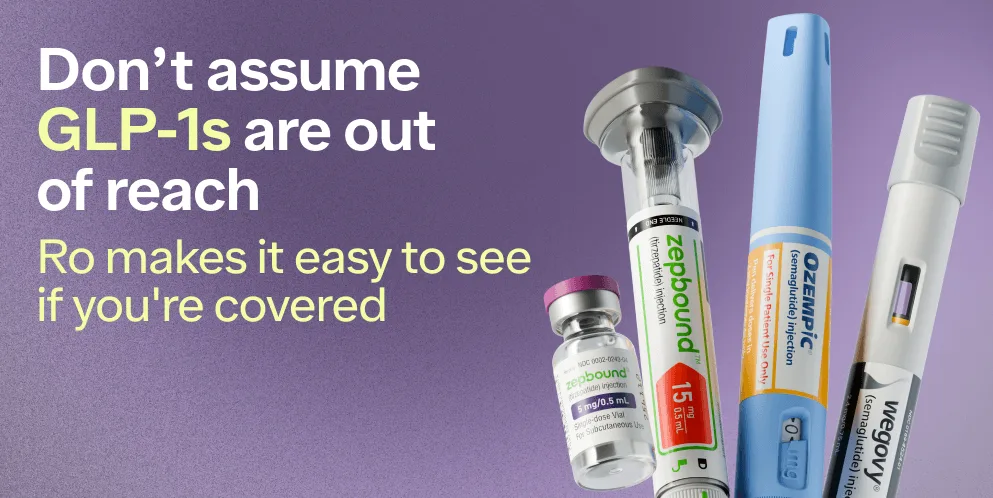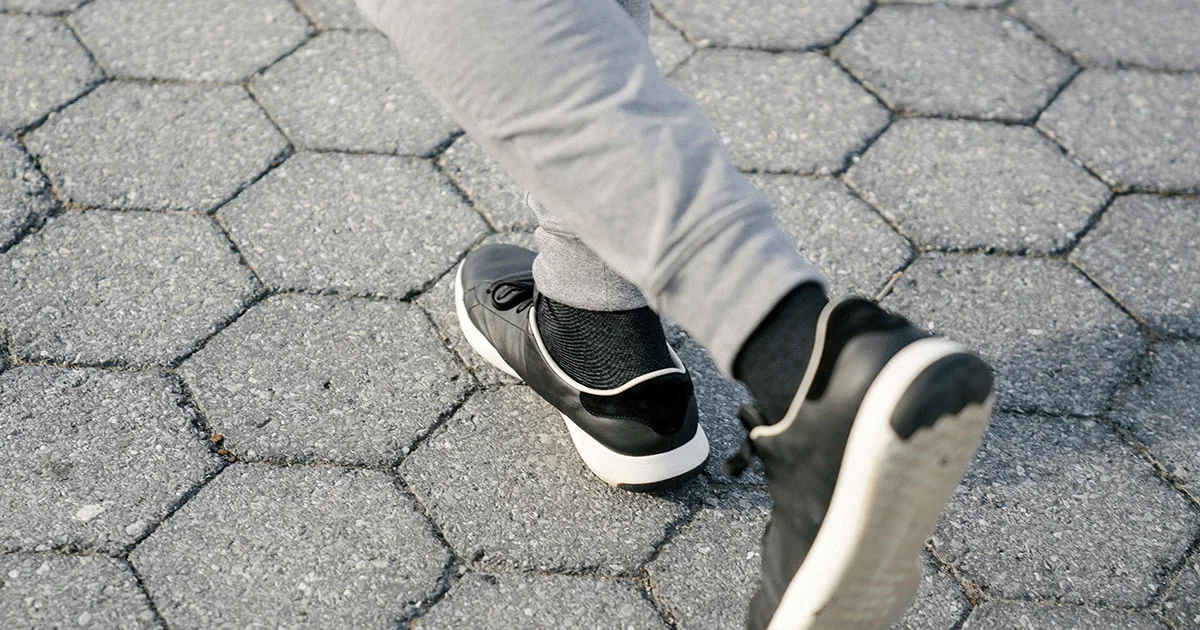Here's what we'll cover
Here's what we'll cover
Here's what we'll cover
If you’ve spent any time online, you’ve probably heard of Ozempic. The diabetes drug has gone viral on social media for its weight loss effects and celebrity endorsements. Celebrities as wide-ranging as Elon Musk to The Millionaire Matchmaker herself, Patti Stanger, have used it to lose weight.
Now, some celebrities reportedly show up in the dreams of everyday people taking Ozempic. According to user reports, these so-called “Ozempic dreams” tend to be bizarre, vivid, and full of celebrities. But, are weird dreams really a side effect of using Ozempic? Let’s explore.
What is Ozempic?
Ozempic (semaglutide) is a once-weekly medication that comes in a single-dose prescription pen, which you inject into the skin of your upper arm, abdomen, or thigh. The drug was developed to treat type 2 diabetes, in combination with diet and exercise.
Ozempic works by encouraging insulin release from the pancreas after you eat sugar or carbs and helps to regulate blood sugar levels. At the same time, it inhibits the release of glucagon into the bloodstream and slows down the rate at which food leaves your stomach. It also helps you feel full sooner, which may cause you to eat less and lose weight.
Studies have shown that on average, people lost 7% of their body weight within a year and a half after taking 1mg of semaglutide (the active ingredient in Ozempic) weekly, in addition to diet and exercise. As researchers and health practitioners realized the drug’s profound weight loss potential, the manufacturers of Ozempic, Novo Nordisk, worked quickly to secure FDA approval of the drug for weight loss. This version of the drug is marketed as Wegovy and is available in higher doses, but both drugs contain the same active ingredient (semaglutide), and either may be prescribed for weight loss (Ozempic can be prescribed off-label for that purpose).
One reason Ozempic and Wegovy are so popular is that they are safe and well-tolerated by most people, with side effects being most common when you first start taking the drug, and subsiding with time as your body gets used to it. Typically, Ozempic’s side effects include nausea, vomiting, diarrhea, abdominal pain, constipation, and… perhaps, weird dreams?
Examples of Ozempic dreams
If you want to find an example of Ozempic dreams, just open up your favorite social media app, says Dr. Inessa Fishman, MD, a facial plastic and reconstructive surgeon for Aviva Plastic Surgery & Aesthetics. “While its exact mechanism of action behind the GLP agonists and vivid dreams is unknown, Novo Nordisk has received multiple reports of bizarre dreams from patients taking semaglutide, and these reports are commonly shared on support groups and social media.”
Ozempic dreams are weirder or wackier than normal, and may or may not involve celebrities. When they do feature celebrities, however, Ozempic dreams definitely deliver on absurdity. One person told the Wall Street Journal they dreamed Jonah Hill changed careers to wait tables on a cruise and join a cabaret. In another person’s dream, Oprah Winfrey saved the day by rescuing the dreamer (who was playing baseball) from a hostile crowd with a go-kart as their escape vehicle.
A TikTok account is dedicated to sharing #ozempicdreams and #wegovydreams, appropriately named @ozempicdreams. Here are a few examples:
“Had my first crazy Ozempic dream, the Kardashian/Jenners were my family and Dinosaurs started invading and I saved us all with essential oils.” (link)
“Spent the night at Home Depot ordering new cabinets and appliances for my kitchen. My salesman, Clint Eastwood, helped me pick out everything I would need…cause apparently Clint Eastwood now works at Home Depot. #wegovydreams” (link)
Not all Ozempic dreams feature celebrities, though. Many users are simply marveling at the vividness and weirdness of their dreams. You can find these stories on TikTok, Facebook, and subreddits dedicated to semaglutide and Ozempic.
A representative from Novo Nordisk, the manufacturer of Ozempic and Wegovy, told The New York Post they had received reports of “abnormal dreams” from users, but “since these adverse events are reported voluntarily from a population of uncertain size, it is not possible to reliably estimate their frequency.”
They added, “Novo Nordisk does not have all information pertaining to the patients’ treatment plan, concomitant medications, and medical conditions. Therefore, it is not possible to establish a cause-effect relationship between the products and the adverse event in question.” Since weird dreams were “not a commonly reported adverse event during the clinical development” of Ozempic, they’re not listed as a side effect.
What causes Ozempic dreams?
So, if wacky dreams aren’t a side effect of using Ozempic, what’s causing them? There are several theories.
Do hormones affect our dreams?
Ozempic works by mimicking a gut hormone called GLP-1 that has receptors in your brain. It’s possible that this interaction may lead some people to have strange dreams while taking Ozempic, says Dr. Fishman. “Semaglutide is a peptide and a GLP-1 agonist, meaning it attaches to GLP-1 receptors, stimulating them. GLP-1 receptors are located in reward-related brain areas, and GLP-1 agonists effectively decrease palatable food intake. There is overlap of GLP-1 receptors with dopamine receptors, and there is likely some hormonal effect the GLP-1 medications have on mood and dreams, in my opinion.”
Dr. JB Kirby, NP, a doctorate-prepared nurse practitioner with 38 years of healthcare experience, agrees. “According to Kim et al. (2020), the release of various neurotransmitters such as serotonin, dopamine, GABA, and glutamate is affected by GLP-1 modulation. Altered levels of serotonin and dopamine can cause vivid or bizarre dreams.”
Indeed, research shows that what you eat and do in your waking hours can influence your dreams. Nightmares are more common with beta-blockers like pindolol and metoprolol, while people taking antidepressants may have a tougher time remembering their dreams. And melatonin is also associated with more vivid dreams and nightmares. There was even a 2005 study that linked eating cheddar cheese to more dreams about celebrities! (The British Cheese Board sponsored that study, and it was never published in a peer-reviewed journal.)
What causes us to remember our dreams?
We are about twice as likely to remember bizarre dreams than non-bizarre ones, according to a study from the 1990s. And, bizarre dreams are not all that uncommon, representing about one in five dreams.
There’s also the Baader-Meinhof phenomenon to consider, known by its more familiar names “frequency bias” or “frequency illusion”. Frequency bias refers to the idea that once you hear about something, you seem to see or experience it everywhere, even though that may simply be because you have an increased awareness of the thing now.
Dr. Kirby doesn’t believe frequency bias is at work here, though. “There are several drug classes that also cause weird dreams such as beta-blockers, antidepressants, antihistamines and others. You may recall this also happened with Chantix (varenicline). Chantix (varenicline) is a prescription medication used to help people quit smoking by reducing the urge to smoke and relieving symptoms of nicotine withdrawal. One of the reported side effects of Chantix is vivid or unusual dreams. The exact reason why Chantix can cause weird dreams is not fully understood.”
The question remains: why celebrities?
If your Zzz’s are filled with celebrities, the explanation could be as simple as you encountered the celebrity recently, be it through their hit TV show or Instagram Reels. Or your dream may symbolize something deeper. Some experts think dream celebrities represent qualities or character traits we aspire to have, such as self-confidence or a great sense of humor.
For example, I am attending the wedding of a close friend in Austin, TX, this weekend, so weddings have been on my mind. Last night, I dreamt about a lovely wedding in Austin, except that it wasn’t for my friend, but for one of my favorite comedians, Naomi Ekperigan. I certainly wish I was as funny as Naomi. Did I dream about Naomi because I’m getting ready for my friend’s wedding and I was listening to Naomi’s podcast yesterday, or because I admire her sense of humor, or a little of both? It may be more fun to ask the questions than to know the answer.
Talk to your healthcare provider if you’re experiencing weird dreams while taking Ozempic — or any other side effect that worries you. They can help you understand what’s going on, and if needed, recommend an alternate medication.
DISCLAIMER
If you have any medical questions or concerns, please talk to your healthcare provider. The articles on Health Guide are underpinned by peer-reviewed research and information drawn from medical societies and governmental agencies. However, they are not a substitute for professional medical advice, diagnosis, or treatment.
Ozempic Important Safety Information: Read more about serious warnings and safety info.
Wegovy Important Safety Information: Read more about serious warnings and safety info.
References
Besag, F. M. C., Vasey, M. J., Lao, K. S. J., et al. (2019). Adverse Events Associated with Melatonin for the Treatment of Primary or Secondary Sleep Disorders: A Systematic Review. CNS Drugs, 33(12), 1167–1186. doi:10.1007/s40263-019-00680-w. Retrieved from https://pubmed.ncbi.nlm.nih.gov/31722088/
Cipolli, C., Bolzani, R., Cornoldi, C., et al. (1993). Bizarreness effect in dream recall. Sleep, 16(2), 163–170. doi:10.1093/sleep/16.2.163. Retrieved from https://pubmed.ncbi.nlm.nih.gov/8446837/
Collins, L. & Costello, R. A. (2023). Glucagon-like Peptide-1 Receptor Agonists. StatPearls. Retrieved from https://www.ncbi.nlm.nih.gov/books/NBK551568/
Davies, M., Færch, L., Jeppesen, O. K., et al. (2021). Semaglutide 2·4 mg once a week in adults with overweight or obesity, and type 2 diabetes (STEP 2): a randomised, double-blind, double-dummy, placebo-controlled, phase 3 trial. Lancet (London, England), 397(10278), 971–984. doi:10.1016/S0140-6736(21)00213-0. Retrieved from https://pubmed.ncbi.nlm.nih.gov/33667417/
Dictionary.com. (2022). Baader-Meinhof phenomenon. Retrieved from https://www.dictionary.com/e/tech-science/baader-meinhof-phenomenon/
Garcia, P., Montastruc, J. L., Rousseau, V., et al. (2021). β-adrenoceptor antagonists and nightmares: A pharmacoepidemiological-pharmacodynamic study. Journal of Psychopharmacology (Oxford, England), 35(12), 1441–1448. doi:10.1177/02698811211034810. Retrieved from https://pubmed.ncbi.nlm.nih.gov/34318729/
Khan, N. (2021). An Expert Shares The Meaning Behind Your Random Celebrity Dreams. Bustle. Retrieved from https://www.bustle.com/life/107773-what-do-celebrity-dreams-mean-5-common-dreams-about-famous-folks-decoded
Kim, Y. K., Kim, O. Y., & Song, J. (2020). Alleviation of Depression by Glucagon-Like Peptide 1 Through the Regulation of Neuroinflammation, Neurotransmitters, Neurogenesis, and Synaptic Function. Frontiers in Pharmacology, 11, 1270. doi:10.3389/fphar.2020.01270. Retrieved from https://pubmed.ncbi.nlm.nih.gov/32922295/
Loftus, P. (2023). ‘I Hate You, Kathie Lee Gifford!’ Ozempic Users Report Bizarre Dreams. The Wall Street Journal. Retrieved from https://www.wsj.com/articles/ozempic-side-effects-weird-dreams-9ccdb749
Nicolas, A. & Ruby, P. M. (2020). Dreams, Sleep, and Psychotropic Drugs. Frontiers in Neurology, 11, 507495. doi:10.3389/fneur.2020.507495. Retrieved from https://pubmed.ncbi.nlm.nih.gov/33224081/
Nielsen, T. & Powell, R. A. (2015). Dreams of the Rarebit Fiend: food and diet as instigators of bizarre and disturbing dreams. Frontiers in Psychology, 6, 47. doi:10.3389/fpsyg.2015.00047. Retrieved from https://pubmed.ncbi.nlm.nih.gov/25741294/
O’Brien, S. A. (2022). How a Diabetes Drug Became the Talk of Hollywood, Tech and the Hamptons. The Wall Street Journal. Retrieved from https://www.wsj.com/articles/ozempic-weight-loss-diabetes-drug-11665520937
Schredl, M. (2010). Characteristics and contents of dreams. International Review of Neurobiology, 92, 135–154. doi:10.1016/S0074-7742(10)92007-2. Retrieved from https://pubmed.ncbi.nlm.nih.gov/20870066/
Steinberg, S. (2023). Ozempic users report weird celeb dreams: ‘Kardashian/Jenners were my family’. New York Post. Retrieved from https://nypost.com/2023/04/19/ozempic-users-report-weird-celeb-dreams-kardashian-jenners-were-my-family/
U.S. Food and Drug Administration (FDA). (2020). OZEMPIC (semaglutide) injection, for subcutaneous use. Retrieved from https://www.accessdata.fda.gov/drugsatfda_docs/label/2020/209637s003lbl.pdf
U.S. Food and Drug Administration (FDA). (2021). FDA Approves New Drug Treatment for Chronic Weight Management, First Since 2014. Retrieved from https://www.fda.gov/news-events/press-announcements/fda-approves-new-drug-treatment-chronic-weight-management-first-2014
Wilding, J. P. H., Batterham, R. L., Calanna, S., et al. (2021). Once-Weekly Semaglutide in Adults with Overweight or Obesity. The New England Journal of Medicine, 384(11), 989–1002. doi:10.1056/NEJMoa2032183. Retrieved from https://pubmed.ncbi.nlm.nih.gov/33567185/












